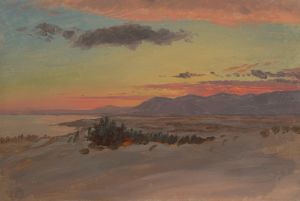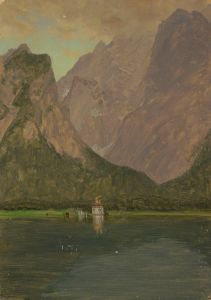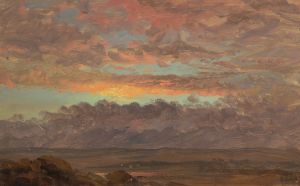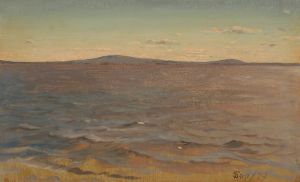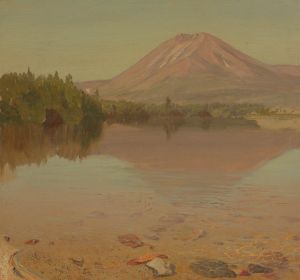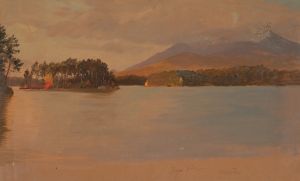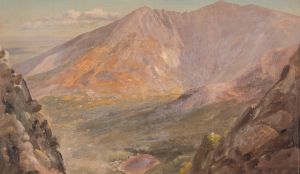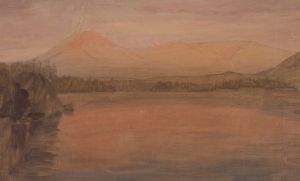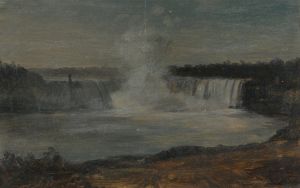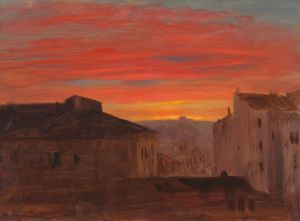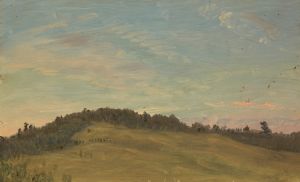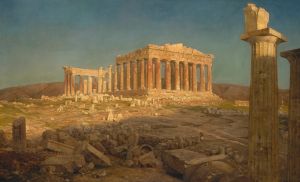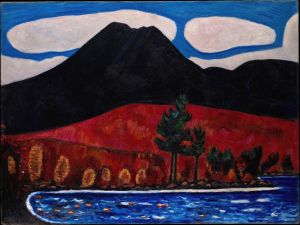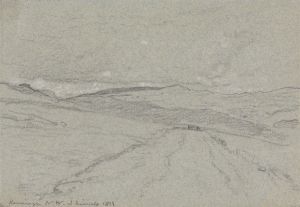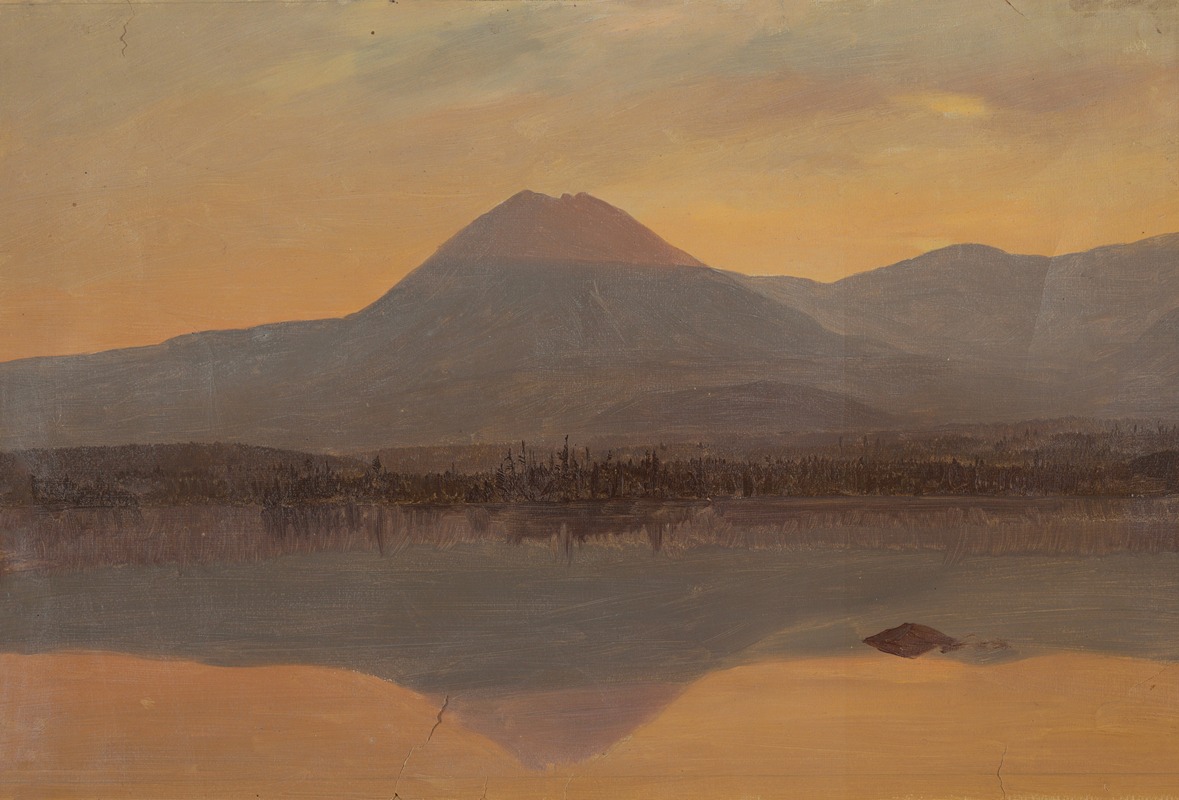
Mt. Katahdin from Lake Katahdin
A hand-painted replica of Frederic Edwin Church’s masterpiece Mt. Katahdin from Lake Katahdin, meticulously crafted by professional artists to capture the true essence of the original. Each piece is created with museum-quality canvas and rare mineral pigments, carefully painted by experienced artists with delicate brushstrokes and rich, layered colors to perfectly recreate the texture of the original artwork. Unlike machine-printed reproductions, this hand-painted version brings the painting to life, infused with the artist’s emotions and skill in every stroke. Whether for personal collection or home decoration, it instantly elevates the artistic atmosphere of any space.
"Mt. Katahdin from Lake Katahdin" is a painting by the renowned American landscape artist Frederic Edwin Church. Church, a central figure in the Hudson River School, is celebrated for his detailed and dramatic landscapes that often depict the sublime beauty of the American wilderness. Born in 1826, Church was a student of Thomas Cole, the founder of the Hudson River School, and he quickly became known for his ability to capture the grandeur of nature.
This particular painting, "Mt. Katahdin from Lake Katahdin," is one of Church's many works that explore the natural beauty of the northeastern United States. Mount Katahdin, located in Baxter State Park in Maine, is the highest peak in the state and is known for its rugged terrain and stunning vistas. It is a significant landmark and holds cultural importance for the Penobscot Native American tribe, who consider it a sacred place.
Church's depiction of Mount Katahdin reflects his interest in the interplay of light and atmosphere, a hallmark of his artistic style. The painting captures the mountain's imposing presence as seen from the tranquil waters of Lake Katahdin. Church's use of light and shadow creates a dynamic composition that highlights the contrast between the serene lake and the majestic mountain. His attention to detail and ability to render the natural world with precision are evident in the way he captures the textures of the landscape and the play of light on the water.
The painting is an example of Church's ability to convey the emotional impact of the natural world. Through his work, Church sought to evoke a sense of awe and wonder in the viewer, encouraging them to appreciate the beauty and power of the American landscape. This approach was in line with the ideals of the Hudson River School, which emphasized the spiritual and transcendental qualities of nature.
"Mt. Katahdin from Lake Katahdin" is part of Church's broader body of work that includes other iconic landscapes such as "The Heart of the Andes" and "Niagara." These paintings not only showcase Church's technical skill but also reflect the 19th-century American fascination with exploration and the natural world. Church's landscapes often served as a form of visual documentation, capturing the essence of places that were, at the time, largely inaccessible to the general public.
While specific details about the creation and exhibition history of "Mt. Katahdin from Lake Katahdin" may not be extensively documented, the painting remains an important representation of Church's artistic legacy and his contribution to American art. It exemplifies his commitment to portraying the beauty and majesty of the natural world, a theme that resonates with audiences even today.
Frederic Edwin Church's work continues to be celebrated for its artistic and historical significance, and "Mt. Katahdin from Lake Katahdin" stands as a testament to his skill and vision as a landscape painter. Through his art, Church invites viewers to experience the splendor of the American wilderness and to reflect on the profound connection between humanity and nature.





